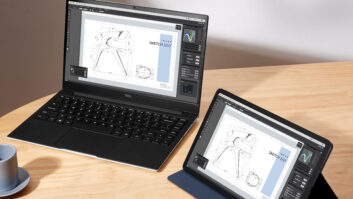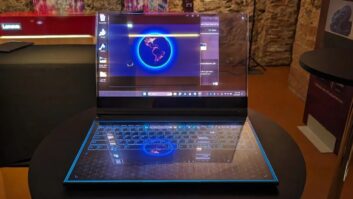NEW YORK — Double-digit percentage growth in tablet sales is a thing of the past.
Worldwide tablet growth suffered a “massive deceleration” last year, growing at about 4 to 5 percent, down from 52.5 percent in 2013, with Apple’s iPad suffering its first year of declining sales, IDC said.
In North America, tablet performance didn’t do as well. “While the global market is on pace for moderate year-on-year unit growth in 2014 (about 4 to 5 percent), IHS Technology forecasts tablet shipments will actually decline in the North American market by as much as 10 to 15 percent YoY,” said Rhoda Alexander, IHS’s director of tablet and monitor research. Retail-level dollar volume will drop about 12 to 14 percent.
In 2013, U.S. unit shipments grew 12.2 percent to 50.3 million units, with retail-level dollar volume growing less than 1 percent to $18.1 billion.
Though growth slowed in 2014, diversity has accelerated. In the less than five years since Apple started selling the first iPad in April 2010, the tablet business has grown from a single 9.7-inch phenomena to models here at CES ranging from 7 inches to — no kidding – 65 inches. Some tablets come with pen or stylus and some without. Some are 2-in-1 hybrid tablets/laptops with detachable keypads and some are not. Some feature cellular connectivity and others are Wi-Fi-only. Some run a version of Android while others run Windows.
Most remarkable, perhaps, is that tablets on display at International CES range in price from $1,699 all the way down to $59.
One reason for the relatively and admittedly oxymoronic quick slowdown in tablet sales is the relatively quick uptake by consumers. Tablet penetration has already reached 55 percent of U.S. homes with an Internet connection, CEA said.
Another anchor is a lower-than-expected replacement rate, with consumers holding onto their devices for three or four years before replacement.
Average prices are falling along with unit sales. The average price of Android tablets has fallen 53 percent since 2011 to $140 at retail, according to Futuresource Consulting. The increasing number of no-name brands selling at impulse prices provides little room for retailer profit.
Consumers are buying not only less expensive models but smaller ones as well. Futuresource reports 7- to 9-inch models made up 65 percent of global shipments last year.
Here’s what tablet vendors are unveiling on the show floor and in hotel suites.
Acer: The Iconia Tab 10 at $199 is an Android 4.4 tablet with an HD (1,280 by 800 pixel) 10.1-inch display.
Designed as a movie-watching-centric tablet, the Iconia Tab 10 is built with a so-called Zero Air Gap LCD panel to brighten colors and improve direct sunlight viewing. With Corning’s Gorilla Glass and an anti-fingerprint coating, the screen is also designed to withstand rough daily usage.
For enhanced sonics, the Iconia 10 features built-in stereo speakers and converts two-channel audio into 5.1 surround sound through stereo headphones via Dolby Digital Plus, which also enhances dialog intelligibility and reduces background noise.
Available in black or white, the Iconia 10 includes Micro- HDMI, wireless display capabilities, MicroSD card slot and MediaTek quad-core processor.
E Fun: Under the Nextbook brand, the company is introducing its first 4G/LTE-connected tablet as well as its first 2-in-1 Android model.
The $199 Nextbook 8-inch 4G/LTE Android 4.4 model includes a 1,280 by 800 IPS display, 64-bit Qualcomm quad-core ARM Cortex-A53 1.2GHz engine, ARM Mali 450 MP4 GPU, 16GB of usage memory, 2-megapixel rear camera, 0.3-megapixel front imager, Bluetooth 4.0, HDMI, MicroSD and MicroUSB. The company also will sell a Wi-Fi-only version at $129.
The company’s first Android two-in-one tablet is an 11.6-inch $249 model bundled with a detachable Bluetooth backlit keyboard equipped with USB 2.0. The tablet itself features a 1,366 by 769 IPS LCD display, Intel Bay-Trail CR quadcore X86 1.8GHz chip and an 64GB of storage.
All three tablets will be available in May.
Fuhu: The company is expanding its Nabi Big Tab HD line with 42- , 55- and 65-inch models, supplementing the 20- and 24-inch models the company claimed were the largest Android tablets available when they were announced last August.
Detailed specs were unavailable at press time, including whether they run only on AC. The current 20- and 24-inch Big Tabs included built-in short-term batteries to enable room-to-room portability.
The current 24-inch model features 15-point capacitive touchscreen, quad-core Nvidia Tegra 4 processor, and 16GB of user storage. It’s built into a lightweight, removable carrying frame that adjusts the display to a variety of angles and can be removed for surface/tabletop board games and multi-play.
Fuhu also plans here to announce new partnerships for branded tablets, including Marvel and Lucasfilm Nabi special editions, along with a new line of Nabi-branded tablets, including a next generation version of its signature Nabi 2 and a larger format edition of its Nabi Jr. “kid’s-first” tablet.
Lenovo: An updated 8-inch Windows-based Yoga Tablet 2 with AnyPen technology is a stylus-based tablet that enables writing and drawing with a regular graphite pencil or ballpoint pen.
The original Yoga Tablet 2, announced last October, isn’t the usual flat tablet. Instead, running along the horizontal rear edge, a combination cylindrical battery and 180-degree hinge/kickstand enables four-position use: hold, tilt, stand and hang. The hang position provides a hole to hand the tablet from a peg for complete hands-free operation.
Supplementing its cinematic capabilities, the Yoga Tablet 2 has built-in stereo speakers, Dolby audio and Wolfson Master Hi-Fi sound.
The Yoga Tablet 2 with AnyPen will be available later this month at $299, with an AnyPen-equipped 10-inch version to follow.
Naxa: Three new sub-$100 Android 4.4 MID PC tablets are the 7-inch NID-7014 ($59), 9-inch NID-9010 ($79), and 10-inch NID-1100 ($99), all with 1,024 by 600 LED LCD screens, 802.11b/g/n Wi-Fi, external 3G connectivity dongle, MicroSD slot, front and rear cameras, Bluetooth 3.0, 1.5 GHz AM logic MXS quadcore ARM Cortex A9 CPU, 1GB of RAM and 8GB of user memory.
RCA: The brand became the fifth best-selling tablet brand worldwide in units in the third quarter, IDC said. The company is introducing largerscreen Android tablets and upgraded specs on its 7-inch tablets. Technicolor, which sells the RCA-branded tablets, was unable to supply details at press time.
Toshiba: The company professes to bring professional-level pen-based tablet computing to the mainstream with its two Encore 2 Write tablets with TruPen stylus input. They are the company’s first pen-enabled full Windows tablets and are among a handful of such tablets in the industry.
The 8-inch version at $349 and 10-inch version at $399 will be available immediately after CES. Both feature 64GB of user memory and an aluminum pen co-designed with Wacom. The pen clips to the bottom of the tablet. Toshiba claims its pen suffers less lag than other stylus systems, includes 2,000 levels of pressure sensitivity, can write at extreme angles other than perpendicular, and uses a right-click button to activate features that Toshiba describes as “effortless.”
This week, Toshiba also will start selling the Windows two-in-one Portégé Z20t, a 12.5-inch tablet that can be detached from its QWERTY keyboard base with a single click. Both the tablet and the base include batteries to provide a combined 17.5 hours of operation. The base includes a full jack array and an emergency pen stylus. A digitizer pen will be sold as an accessory.
The Portégé Z20t will be sold in versions with either 4GB RAM/128GB SSD or 8GB RAM/256GB SSD at $1,399 and $1,699.
Toshiba also will sell the tablet without keyboard, calling it the Portégé WT20 at $899.













